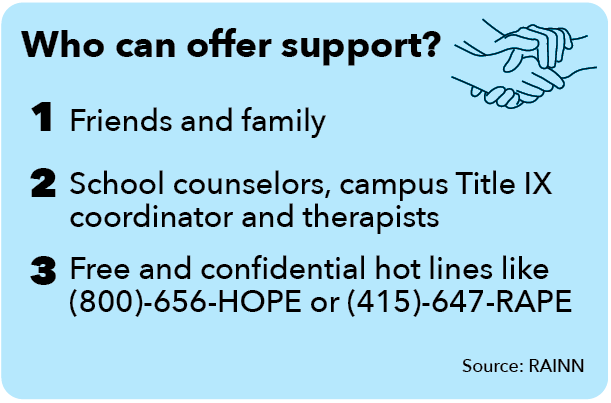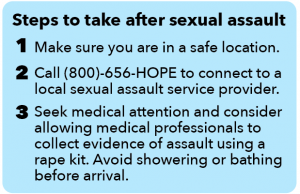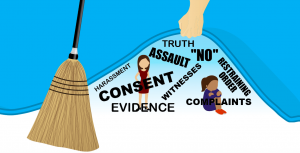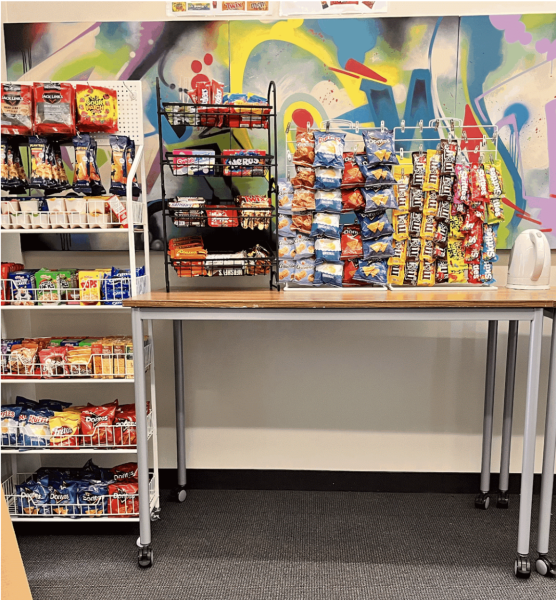‘No’ means no
Misconceptions about consent cause unsafe consequences
April 3, 2019
The increase of individuals speaking up about recent and previously undisclosed sexual assaults is bringing attention to how both men and women have a range of understanding about consent.
An individual gives consent by explicit verbal agreement or by a clear statement of “Yes.” Any sexual contact made without the recipient’s affirmative consent is considered sexual assault, according to the United States Department of Justice.
“Sexual assault includes violations of the body or bodily autonomy such as unwanted oral sex, unwanted penetrative sex or any kind of greater sexual touching,” sexual ethics educator Natasha Singh said. “Women are undoubtedly at greater risk for sexual assault and sexual violence, but with that said, boys are victims of sexual assault as well.”
Sexual consent cannot be assumed by body language, non-verbal communication, current relationship status, sexual history or incapacitation such as from intoxication, according to the Centers for Disease Control and Prevention. Fifty-one percent of women report their perpetrators are their intimate partners.
“I think it’s really important to know most sexual assaults take place at home or near the home,” Singh said. “We need to have much more training about how to communicate because oftentimes, there’s a real lack of comfort in speaking directly to one another even between people in otherwise healthy relationships.”
Singh says women and men need to learn how to give or not give consent to sexual experiences and need to be educated on the ways sexual harassment and sexual violence are manifested.
“In terms of safety, it is very important for people to not only focus on how to be safe, but also how to not perpetrate sexual violence,” Singh said. “There was so much emphasis for many years on girls to ‘Keep yourself safe,’ but not enough focus on ‘Don’t be the person that violates somebody.’”
Equal access for young men and women to sexual education that has an emphasis placed on understanding consent could potentially decrease risk of sexual harassment or violence, according to Singh.
“We’re living in a time where everybody’s getting a lot more information about consent, but people have very different ideas of what consent looks like,” Singh said. “I understand why people go to the internet for information, but oftentimes the info ends up creating more stereotypes around gender and creating less progressive attitudes towards sex and sexuality.”
Since private schools have the ability to curate their curriculum and because only 24 states require sex education at public schools, teens and young adults have very different levels of knowledge by the time they graduate high school, according to the National Conference of State Legislatures.
Senior Riley Kramer says that compared to some of her friends who attended different elementary schools, she had a limited sex education that did not cover the topic of consent.
“There was very little sex education at my school,” Kramer said. “We maybe talked once about the different body parts, and I’m pretty sure that was the extent of it. I had to talk to friends and my mom about their experiences to learn
about things.”
Depending on the course and where it is taught, a sexual education program could cover topics such as healthy relationships, personal skills, and sexual health and behavior. Subtopics could include anatomy, puberty, abstinence, contraception and consent.
Of the American students who do receive sexual education, most begin during sixth grade, according to Singh. Many other countries start before the age of 5.
“Many Dutch students report having better consensual first sexual experiences than their American counterparts and the Dutch start their education at age four,” Singh said. “Often, we’re embarrassed to talk about these natural topics, but when you don’t teach a young person, for instance, the names of their body parts, how can they then realize if somebody is treating them inappropriately.”
Girls between the ages of 16 and 19 are four times more likely to experience sexual assault than the general female population, according to the Department of Justice.
“Sexual education is a very taboo topic and a lot of schools are afraid to really discuss it,” Kramer said. “I think that more conversation and more sex education would most likely allow for better communication and prevent some instances of sexual harassment or assault.”
Singh says the inconsistency in sexual education and knowledge about consent becomes especially clear in college.
“By the time you get to college and university you will encounter people who’ve had maybe no sex ed or who have been exposed to very few conversations about healthy relationships,” Singh said, “so there is a lot of ignorance when everybody’s beginning to sexually explore.”
While 46 percent of high schoolers have had some sort of sexual experience, 60 percent of college students are sexually active.
Director of Student Support Annie Egan says while it may be easier to not say anything when someone makes an inappropriate comment or action, young people should learn to speak up in awkward situations and practice giving consent before they enter college.
“When someone makes a sexualized joke or maybe puts an unwanted hand on a woman’s thigh, that woman needs to be able to say ‘That is not funny. That is not what I want,’” Egan said. “It’s very difficult to remove yourself and speak out in an uncomfortable situation if you have zero practice doing it, so practicing recognizing what your voice sounds like when you say ‘No’ is important.”
Knowing what consent is and how to give it, however, is not enough to keep oneself safe. Being under the influence of alcohol or drugs can inhibit one’s ability to make coherent decisions regarding sexual safety, according to Egan, because alcohol and drugs alter brain chemistry, they affect moods, behaviors and thinking.
“Your abilities are compromised when you’re under the influence,” Egan said. “If you are sober it is far easier to be aware of your surroundings, to make quick decisions, to think more clearly and to communicate articulately to somebody else.”
At least half of sexual assaults that take place on a college campus involve alcohol, according to the National Institute on Alcohol Abuse and Alcoholism.
“It’s important that we start talking about things like consent because, unfortunately, people can perpetrate sexual violence and not even think they’ve done anything,” Singh said. “We need to do a much better job of normalizing conversations and making communication direct.”












